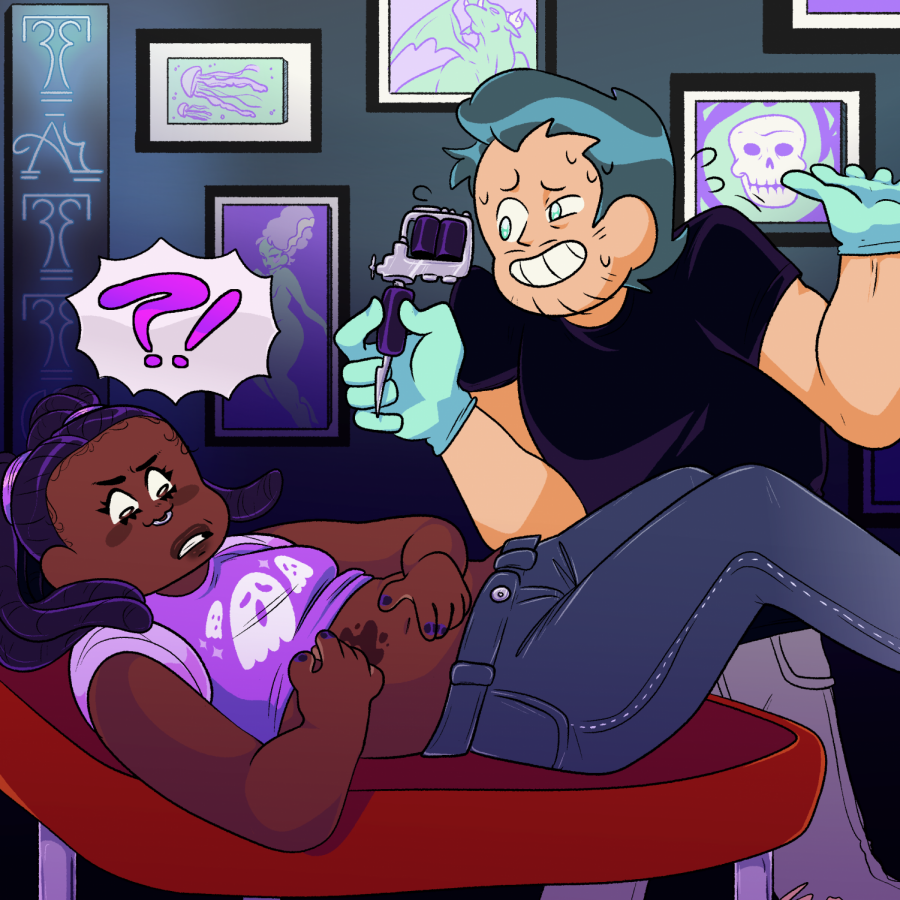Individuals with darker skin tones struggle to find knowledgeable tattoo artists
August 2, 2021
Editor’s Note: This article first appeared as part of the July 26 flipbook.
When UT alumna Denise Morales got a tattoo cover-up in 2018, she didn’t expect it to look worse than the original tattoo.
“Originally it was just a line tattoo of some DNA strands on my rib cage,” Morales said. “I decided to get it covered up and the guy was like, ‘Yeah, I can fix this, I can give you watercolor,’ and I hesitated. I said, ‘Watercolor is usually done on people with fair skin because you can see the colors and tell what it is.’”
Morales said that when it was done, the tattoo looked like a brown smudge on her skin. She later got a cover-up of the cover-up when she studied abroad in 2019, and spent over $400 to fix her tattoo.
Morales’ experience is not uncommon. According to Zippia, 66.2% of tattoo artists are white and may be unaware that different skin tones call for different approaches when tattooing. Many dark skinned individuals struggle to find tattoo artists who are knowledgeable about the way color may appear on the skin once a tattoo heals.
“Most people don’t realize when you see a tattoo, you’re not looking at the surface of someone’s skin,” said Roni Zulu, an Austin-based tattoo artist. “You’re actually looking through a few layers of skin because the tattoo is put underneath. That’s why black ink on me looks kind of greenish, while black ink on a fair skin person looks very black.”
Zulu has been tattooing for nearly 30 years. He said most of his tattoo knowledge came from traveling to the Polynesiasn Islands and learning traditional techniques from Indigenous people in the area.
Zulu said part of the reason people of color in the U.S. struggle to find artists who specialize in tattooing dark skin tones is because there aren’t a lot of artists with enough experience. He said another reason might be lack of education regarding why certain tattoo styles may or may not work on different skin colors.
“Sometimes, people of color will go into a tattoo studio and see all the bright colorful things on the wall and say, ‘I want that!’ and when a tattoo artist says, ‘That’s not really going to look good on you,’ people will get discouraged and leave the shop,” Zulu said. “There’s not enough conversation educating people about this.”
People with a lot of experience getting tattooed, like tattoo enthusiast Ronald Phillips, will go into a tattoo shop with an idea of what to expect.
“If I see something that’s really pretty, like with rainbows and all that good stuff, I like to think about how it would look without the color and how the line work on it would look instead of how it is in the picture I’m looking at,” Phillips said.
Phillips said he feels fortunate to feel confident that the tattoo will turn out the way he expects no matter if he wants color or not, but Morales said she often feels limited in what she can do.
“I have to ask and look around,” Morales said. “I can’t trust everybody to feel like they can tattoo my skin. We have to be careful, do the research and be patient.”



